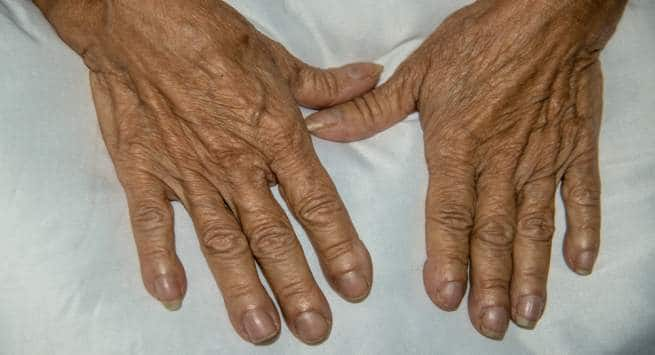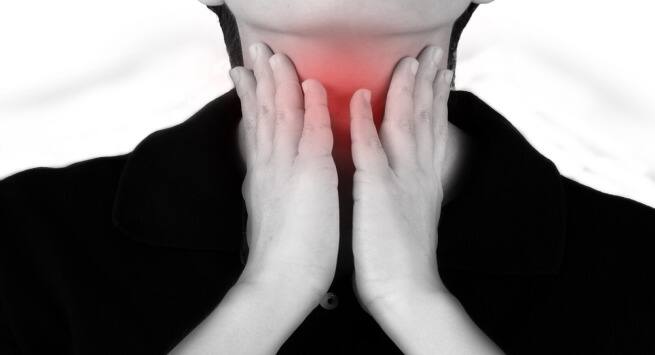Chronic fatigue syndrome (CFS) is a condition characterized by unexplained debilitating fatigue that lasts for at least six months and is accompanied by four or more symptoms:
- Post exertional malaise or extreme exhaustion after physical or mental exercise that lasts for more than 24 hours
- Poor concentration and impaired short term memory
- Sleep disturbance
- Musculoskeletal pain
- Tender lymph nodes
- Headaches
- Sore throat
- Anxiety and depressive disorders
Since CFS, with its complex symptoms, has no clear mechanism, treatment options and effectiveness are limited and vary from person to person. What may be effective for you, may not be the right option for another. You may need to find the best treatment for you through ‘trial and error’ method and that may take a lot of time! If you feel you have CFS, consult a doctor. Discussed here are some researched therapies that work/ do not work.
Pharmaceutical therapy
Conventional treatment (western medicine) protocol does not seem to be very effective. However, they may help with your specific set of symptoms. For example, your doctor will prescribe antidepressantsto help you cope with the problems associated with CFS. Similarly, your doctor may prescribe sleeping aids/ pills if sleep disturbance is one of your associated symptoms.
Studies have shown that corticosteroids such fludrocortisone and hydrocortisone are no more effective at improving functional status than placebo. Rather, these may have adverse effects for some people with CFS. [1]
Similarly, review of trials on dietary supplements and primrose oil found that they were not much effective at increasing the proportion of people reporting an improvement at 3 months. Dietary supplements had no beneficial effect on fatigue, nor did primrose oil help improve depressive symptoms. [1]
Researchers don’t know don’t know how effective intramuscular magnesium is in treating CFS, as studies are very few and are mostly of low quality. However, one study found that intramuscular magnesium injections may be more effective at improving energy at 6 weeks. It also seemed to reduce pain and improve emotional reaction. [1]
Homeopathy
Homeopath Dr. Vijay Vaishnav believeshomeopathic remedy selected on the basis of a detailed history and examination would bring the CFS patient back to normal activity. He suggests remedies like Phosphorus, Lycopodium, Pulsatilla, Nux vomica and Sepia. Other remedies such as Kali phos, phosphoric acid, gelsemium, picric acid and Avena sativa may help in tackling the fatigue. [2]
Clinical trials, however, found insufficient evidence to recommend homeopathy as a treatment in chronic fatigue syndrome.[1]
Traditional Chinese Medicine
Acupuncture and moxibustion is said to be an effective treatment for CFS in traditional Chinese medicine. It is different from Chinese herbal medicine. Acupuncture is the insertion of fine needles at specific points of the body, and moxibustion is a type of heat therapy using dried leaves of mugwort herb, called moxa, to stimulate certain points of the body. Scientists have found that this combination treatment could strengthen the immune system. However, they also felt that larger studies were required to confirm it. [3] Read here 6 yoga asanas to zap chronic fatigue
Cognitive behaviour therapy (CBT)
Cognitive behaviour therapy is a psychological therapy model that is commonly used to treat a range of psychological and chronic pain conditions including CFS. Studies have shown that those who opt for CBT are more likely to have reduced fatigue symptoms at the end of treatment than people who receive usual care.
Researchers also compared CBT against other types of psychological therapy, including relaxation techniques, counselling and support/education, and here, too, found that CBT is more effective in reducing fatigue symptoms at the end of treatment compared to other psychological therapies. [4]
CBT encourages people with CFS to –
- Gradually build and resume regular daily activities
- Identify triggers and plan how to deal with them
- Learn how to manage and reduce the symptoms
‘CBT helps address any beliefs that may make recovery more difficult. The therapy helps patients understand their symptoms, tackle the understandable fears they have about activity and encourages people to do more despite their tiredness,’ explains Professor Trudie Chalder, Director of Chronic Fatigue Research and Treatment Unit, King’s College, London, run with the South London and Maudsley NHS Foundation Trust. [5]
Graded exercise therapy (GET)
Graded exercise therapy, that helps cope with CFS, is physical activity that starts very slowly and gradually increases over time.
The 2007 National Institute for Clinical Excellence (NICE) guidelines for the management of CFS/ME recommend GET as one of the most effective therapies for CFS. [6] Read more about What happens when you suffer from Chronic Fatigue Syndrome
Benefits of GET include –
- Improves the efficiency of the heart, lungs and circulation
- Helps the body to deal better with the demands of daily life
- Improves strength, endurance, flexibility, balance,ability to fight infections, sleep quality, concentration,well-being and mood, confidence, self-esteem and social activity
The GET programme has 6 steps that need to be followed:
- Stabilize your routine
- Start doing regular stretches
- Decide on a goal and choose your exercise/ physical activity
- Set your exercise/ physical activity baseline
- Increase the duration of your exercise/ physical activity
- Increase the intensity of your exercise/ physical activity
It is important that you discuss your GET programme with your doctor/ therapist.
Although many studies have shown that GET is an effective therapy for CFS, researchers at ME-de-patiënten Foundation, Limmen, the Netherlands, suggested that CBT/GET is not only hardly more effective than standard medical care, but the therapy can affect CFS patients adversely. According to them, exertion induces post-exertional malaise (PEM) causing –
- Decreased physical performance and aerobic capacity
- Increased musculoskeletal pain
- Increased neurocognitive impairment, exhaustion and weakness,
- A long-lasting recovery time
- May amplify pre-existing symptoms such as inflammation, immune dysfunction, andstress.
The researchers emphasized the point that it is unethical to treat patients with CFS with ineffective, non-evidence-based and potentially harmful therapies such as CBT/GET. [7]
Lifestyle and attitude
CFS will undeniably impose restrictions on your way of life. Following suggestions may help.
- It is important to come to terms with your illness. Even if you find the suitable treatment, the treatment period may be too long and you may start losing hope. However, keep trying, you never know, you may find you are improving and feeling really good at one point of time.
- Always remain positive about the prospect of recovery. Being pessimistic never helped anyone.
- Pace yourself. You will need to slow down so as not to exhaust yourself permanently. Take on little at a time and have a flexible approach to work or task.
- Develop a plan to limit overexertion and emotional stress. Relaxation therapies may help you with physical and mental well-being. Yoga, tai-chi, and meditation can be a beneficial adjunct to your therapy.
- Improve your sleep habits by going to bed and waking up at the same time each day. Avoid caffeine and alcohol to get a better quality of sleep.
Reference
- Reid S, Chalder T, Cleare A, Hotopf M, Wessely S. Chronic fatigue syndrome. BMJ Clinical Evidence. 2011;2011:1101.
- Vaishnav V. Chronic fatigue syndrome. Homeoint.org
- Wang T, Xu C, Pan K, Xiong H. Acupuncture and moxibustion for chronic fatigue syndrome in traditional Chinese medicine: a systematic review and meta-analysis. BMC Complementary and Alternative Medicine. 2017;17:163. doi:10.1186/s12906-017-1647-x.
- Price JR, Mitchell E, Tidy E, Hunot V. Cognitive behaviour therapy for chronic fatigue syndrome in adults. Cochrane Database of Systematic Reviews 2008, Issue 3. Art. No.: CD001027. DOI: 10.1002/14651858.CD001027.pub2.
- King’s College London – CBT for chronic fatigue syndrome. Kclacuk.
- NHS. Graded Exercise Therapy. A self-help guideforthosewithchronicfatiguesyndrome/ myalgicencephalomyelitis.
- Twisk FN, Maes M. A review on cognitive behavorial therapy (CBT) and graded exercise therapy (GET) in myalgic encephalomyelitis (ME) / chronic fatigue syndrome (CFS): CBT/GET is not only ineffective and not evidence-based, but also potentially harmful for many patients with ME/CFS.Neuro Endocrinol Lett. 2009;30(3):284-99.
Image source: Shutterstock





















